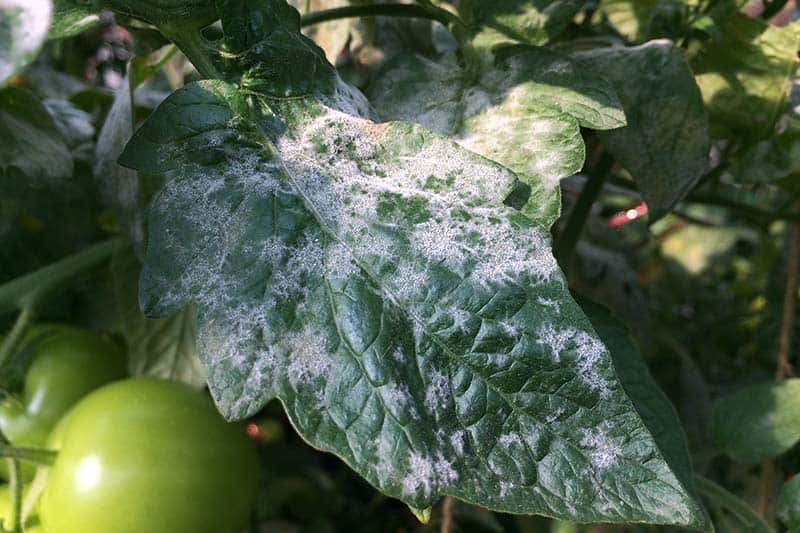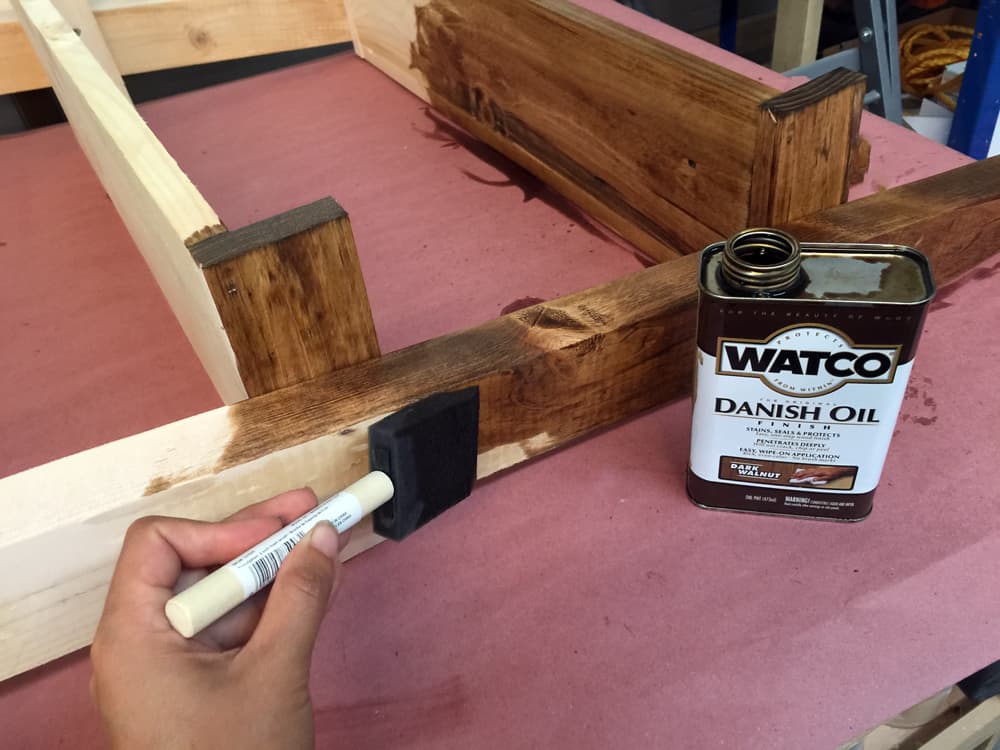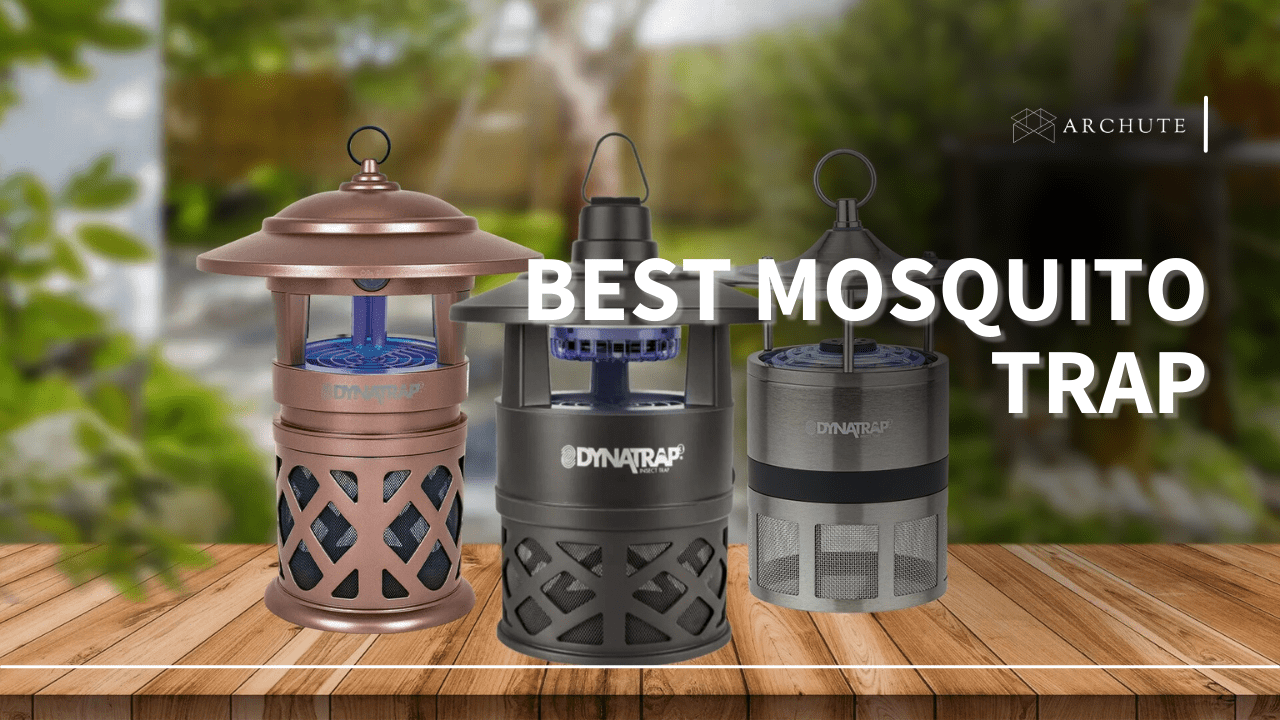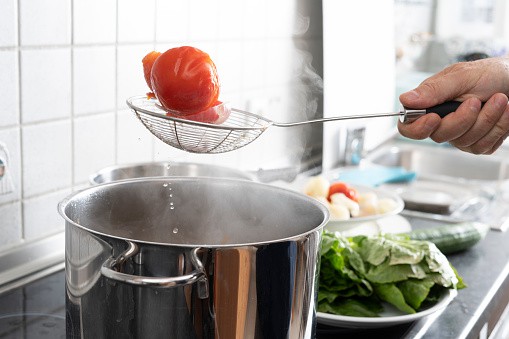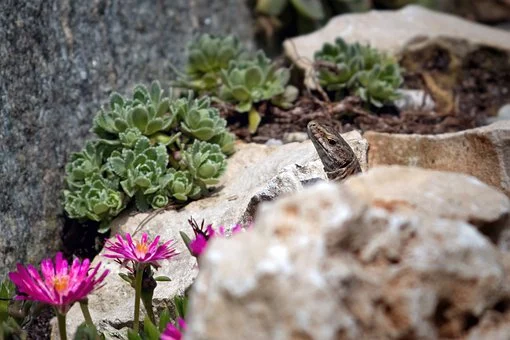Any gardener will tell you that seeing the plants you grew thriving gives a sense of happiness and pride; for example, when you grow tomatoes and see them ripening and doing well is pure satisfaction. However, when you start noticing white spots on tomato leaves, it may be worrying, and you need to take action immediately.
When you start seeing white spots on tomato leaves (powdery mildew), it can signify disease or pests. Therefore, it is important to check first before dealing with it, as you may deal with the condition inappropriately, making matters worse.
What Causes White Spots on Tomato Leaves?
The white spots you see on your tomato leaves are also called powdery mildew. This powdery mildew is a fungal disease, and various types of fungi cause it. The fungi that cause powdery mildew thrive in dark and moist places. Therefore, when there is high humidity, and your tomato plants fail to get enough air circulation or sunlight, the tomato plant leaves are likely to provide a safe place for the fungi to grow and reproduce. When the fungi reproduce, that is when the white spots start forming on your tomato plant leaves.
Another factor that may result in the formation of powdery mildew is over-fertilization. This is so because powdery mildew also targets younger plant leaves more often than older and established leaves. Therefore, spraying the tomato plants with too much fertilizer will accelerate growth. As a result, the tomato plant will produce many fresh, new leaves that the powdery mildew will find suitable for its growth. These conditions favor the growth and reproduction of the fungi.
Symptoms and Effects of Powdery Mildew
Powdery mildew can start as red blister-like areas on the upper side of the tomato leaves, followed by a white powdery growth on the upper parts of the tomato plant. The younger and more succulent tissues usually show the first signs of the disease.
Powdery mildew is an unattractive nuisance, but it is rarely fatal to your tomatoes. However, it stresses the plant, and if the disease occurs repeatedly, it may weaken the plant, making the plant more susceptible to insect damage and other diseases.
This plant infection can leech nutrients from your tomato plants, making the leaves wither and yellow. Once a larger part of the tomato leaf gets affected and is covered with white spots, photosynthesis will be impaired, and the tomato leaves start falling prematurely. In addition, it will affect the tomatoes’ flavor as insufficient photosynthesis can limit the number of sugars produced.
How Can I Treat White Spots on Tomato Leaves?
It is important to look at the options and apply the most appropriate way to get rid of powdery mildew. The sooner you address the problem, the higher your chances of finishing them. So, once you start noticing white spots on tomato leaves, act immediately, or it will be too late. Let’s go through the different ways of treating tomato plants with white spots on the leaves.
(a). Pruning
Pruning tomato plants is one of the best ways to encourage growth. However, it is also an effective method to get rid of powdery mildew. All you need to do is prune the infected leaves to prevent the powdery mildew from spreading to other unaffected parts.
Pruning also improves air circulation to which can help prevent the occurrence of powdery mildew in the future. When you prune the plants, even sunlight will reach all the parts of the tomato plant, which will prevent white spots on tomato leaves in the future days. After pruning, remember to clean your tools to prevent further spread of the powdery mildew when you use the tools again. Clean them well before storage so that you don’t transfer this fungal disease to the tomato plants on the net use.
If the infection is severe, prune only the leaves that are affected the most. If you prune too many tomato leaves, you will be risking the life of your tomatoes and the plants as they will not be able to carry out photosynthesis, which means they will die. In addition, you will have to use fungicide once you have pruned the most affected leaves to prevent further infection and damage.
(b). Neem Oil
If you are surprised to see neem oil and tomatoes in the same article, don’t be, there’s more. You may have used it for skin and hair without knowing that it is used to treat powdery mildew as well. Farmers commonly use Neem oil to treat plants from the effects of hornworms, aphids, whiteflies, arthropod pests, and even powdery mildew as it is a pesticide and a fungicide.
You can control that stubborn powdery mildew with neem oil, and the best thing is that it takes only about 6-7 days to heal your tomato plants. Using neem oil is even better than commercial fungicides, taking longer, about 10-14 days. In addition, this oil is 100% non-toxic, so you do not have to worry about your kids, pets, or even yourself. It is also safe for the environment, so using this oil is one of the best ways to get rid of powdery mildew.
You can also use neem oil to prevent the outbreak of powder mildew. Isn’t that great?
Other ways to get rid of powdery mildew include;
(a). Potassium Bicarbonate
This product has several uses in food processing, wine-making, and medicinal products. For example, if powdery mildew gives you a headache, you can also try it on your tomato plants to treat the white spots effectively to get rid of them.
(b). Mouthwash
Don’t be surprised to see this product here. Mouthwash is formulated to kill germs, so it can also function as a treatment for the white spots on tomato leaves. The best mouthwash to use is one that is ethanol-based. To use it, you need to mix one part of mouthwash into three parts of water and spray it to the affected areas.
(c). Household Vinegar
The common household vinegar is also a great solution to getting rid of powdery mildew on your tomato plants as it is safe to use on plants with fruits and vegetables. The only problem with vinegar is that it is acidic, and when used repeatedly, it can affect your plants. To use it, you need to mix four tablespoons to one gallon of water and spray on the affected tomato plants after every three days.
Prevention of Powdery Mildew on Tomato Leaves
How can you prevent white spots from forming on your tomato leaves? Read on to find out. Unfortunately, it is impossible to prevent powdery mildew from forming on your tomato leaves entirely. This is mainly because the wind carries the fungal spores, and when they land on your tomato plants and find a conducive environment for growth, they start reproducing.
However, there are methods that you can apply to minimize the chances of this disease affecting your tomato plants. We shall discuss the methods below.
(a). Lighting
Powdery mildew may find it very conducive to grow in dark areas. Therefore, to prevent them from attacking your tomato plants, ensure that your plants receive 6-8 hours of sunlight per day, as that is the ideal amount of sunlight that tomatoes require to do well.
(b). Adequate Spacing
We already mentioned that poor air circulation is one of the main causes of powdery mildew on tomato plants. So when planting your tomatoes, try to leave enough space between each tomato plant as this will allow enough air to flow through the tomato leaves. Place the plants 18-24 inches apart, depending on the size of your garden and the number of seedlings you want to plant.
If you overcrowd the tomato plants, air circulation will be limited, hence creating a conducive environment for the formation of powdery mildew.
(c). Pruning
We already discussed pruning as a method of dealing with powder mildew. However, it is also a method that you can apply to prevent the white spots on tomato leaves, as it helps improve air circulation. Because tomato leaves can overgrow and crowd the place, preventing air circulation from taking place as necessary. For that reason, it is important to prune them once in a while when the leaves are overgrowing.
Remember that you only have to prune the excess and overgrown tomato leaves and branches. If you remove too many leaves, you may end up destroying your tomato plants.
(d). Planting Resistant Varieties
If you have experienced problems with powdery mildew before, it is important to check the species of tomatoes you plant. Some like Granadero are more resistant to this fungal disease than most types. Therefore, planting it may help prevent reoccurrences of powdery mildew in your tomato plants.
(e). Choose Healthy Plants
When planting your tomatoes, use healthy seedlings that have not been stressed. Factors that may cause stress to plants include overwatering, drought, and other poor growing conditions. If you use such plants, you may be inviting powdery mildew invasion.
Other Causes of White Spots on Tomato Leaves
Tomato leaves and other plant leaves can turn white as a result of other factors besides powdery mildew. Some other causes of white spots on tomato leaves include the following.
(i). Sun Scalding
When tomato plants are left in the sun for too long, the plant’s leaves can develop white spots due to sun damage. This commonly happens when the tomato plant is transferred from indoors to outdoors.
The excess sunlight can affect your tomato plants by burning them, and the leaves may turn white, wither, and fall off. It will then inhibit your tomato plant’s growth and set your tomatoes back.
The best way to protect your tomato plants from sun damage is by putting them in the shade once you transplant them indoors to outdoors. Then, after a few days, remove the shade and let them be in direct sunlight.
(ii). Late Blight
Late blight is a disease that may cause tomato plant leaves to wither and die. This also happens to the branches of the tomato plant. In addition, the tomatoes themselves will develop brown spots, and the infected leaves will have white fungal spots.
If this disease affects your tomatoes plants, prune the infected areas and do not compost the pruned debris as the disease will find its way back to your garden. In addition, apply a copper fungicide once a week to your pants to prevent a reoccurrence.
Frequently Asked Questions About White Spots on Tomato Leaves
1. Is the powdery mildew on plants harmful to humans?
Powdery mildew is not directly harmful to humans. However, it harms potential food sources. It is also unsightly and can cause severe damage to plants if not treated as soon as its symptoms appear. However, it is not harmful to humans to the touch; neither can it infect them.
2. What does powdery mildew look like on tomato plants?
Powdery mildew is easy to identify on tomato plants as it looks like someone brushed the leaves with a white powder. It is more common in greenhouse plants than outdoor gardens as greenhouses do not have enough free airflow and high humidity.
3. Why are the leaves on my tomato plant turning white?
When you notice white spots on your tomato plant leaves, it may be a sign of powdery mildew. Powdery mildew is a fungal disease that affects plants due to high humidity, poor air circulation, and insufficient sunlight. It rarely kills the tomato plants but can affect the taste of your tomatoes and even reduce the yields.
4. What to do with tomato plants with spots on leaves?
When your tomato leaves develop spots, prune the infected areas and spray the plant with a fungicide if necessary. You can pluck up to a third of the leaves if you catch the disease early enough. However, if you remove more than a third of the leaves, you could kill the plant. Also, keep the leaves dry to minimize the spread of this fungal disease.

